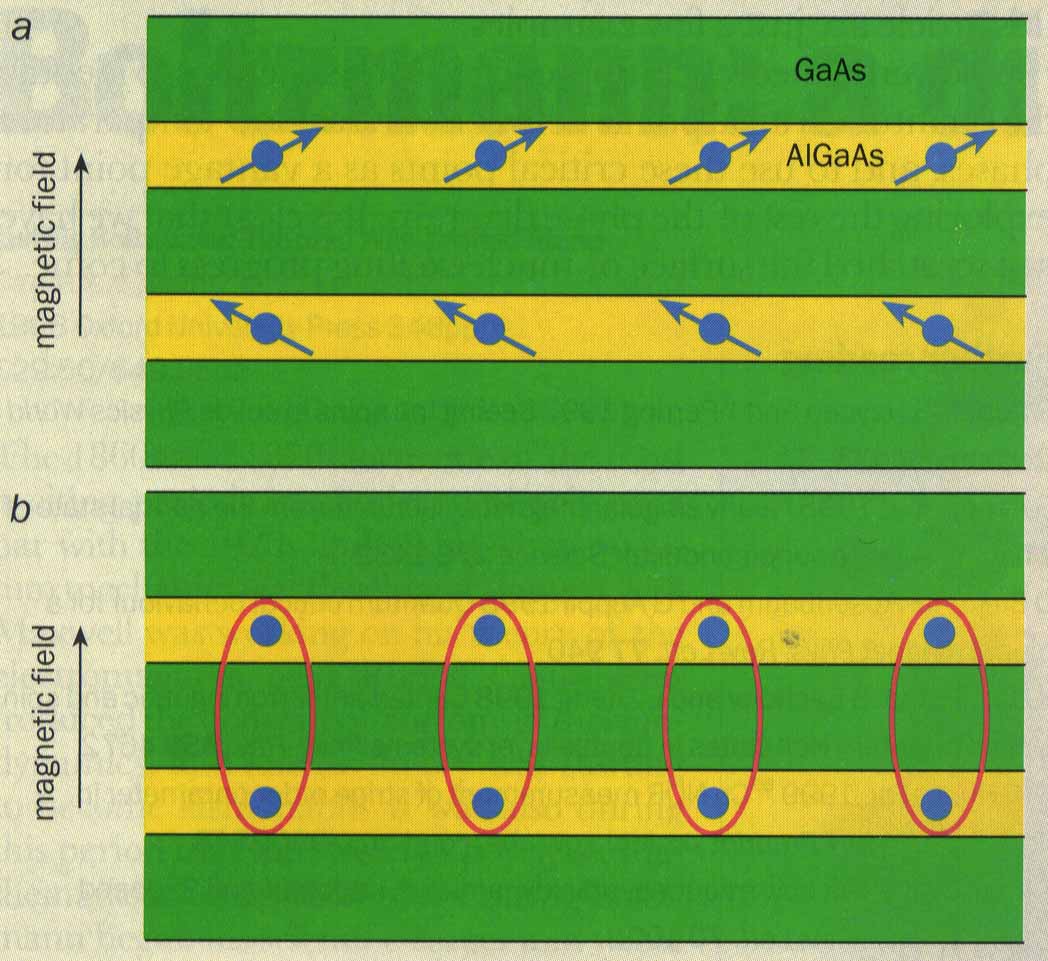
The study of electrons confined in a two-dimensional layer at the surface of a semiconductor has occupied physicists for over thirty years. In addition to their fundamental importance, such two-dimensional electron gases have also be exploited in the high-electron mobility transistors found in mobile phones and satellite dishes.
When a two-dimensional electron gas is placed in a very strong magnetic field, the electrical response displays the remarkable "quantum Hall effect" - the transverse resistivity is quantized at values determined by the fundamental constants of nature. The origin of this effect is ultimately due to the quantization of the electronic kinetic energy into discrete Landau levels by the external magnetic field. This quenching of the electron motion means that other degrees of freedom become important when determining the low-energy excitations of the system. In particular, a considerable amount of energy is needed to excite an electron from one Landau level to the next, so the low-energy magnetic interactions between the electron spins play a key role in the properties of the system. Although the electrons are not actually fixed on a lattice, their behaviour can be interpreted as if they were (Fig 5).
|
Figure 5: Magnetic ordering in 2-D electron gases
|
|
 |
|
|
Electrons are confined within two two-dimensional quantum wells in a structure consisting of alternating layers of gallium arsenide (green) and aluminium gallium arsenide (yellow) [10]. The two possible magnetic phases shown have been observed in recent experiments. These phases are separated by a quantum phase transition. The phase diagram can be explored by varying the spacing between the layers, the direction of the magnetic field (not shown) through the sample and various other parameters.
|
The magnetic quantum phase transition occurs in so-called bilayer quantum Hall systems. In these a pair of two-dimensional electron gas layers, each with one Landau level exactly filled, are placed about 20 nm apart. Experiments by Vittorio Pellegrini, Aron Pinczuk and others at Lucent Technologies in the US, and by Anju Sawada and co-workers at Tohuku University in Japan, have probed the magnetic properties of such systems in laser scattering experiments. They found, under certain conditions, a magnetically ordered phase with a macroscopic ferromagnetic moment within each layer, but with the moments of the layers pointing in different directions (Fig 5a). This is rather similar to the antiferromagnetic phase found in high-temperature superconductors. Under different conditions they observed a quantum paramagnet ground state, with particle-like S = 1 triplet excitations (Fig 5b). Again this is reminiscent of the behaviour observed in high-temperature superconductors.
This phase diagram can be understood by examining the preferred spin configurations of nearby electrons: two electrons within the same layer prefer to have their spins parallel to each other (an intra-layer ferromagnetic exchange), while electrons in different layers prefer anti-parallel spins (an inter-layer antiferromagnetic exchange). This leads to antiferromagnetic and quantum paramagnet phases observed in the experiments.
Obviously there must be a transition between these two phases, and detailed theoretical predictions have been made for the behaviour of the system near this critical point. The experimental system has a great deal of flexibility in tuning material parameters - in principle, it is possible to vary the electron density, the layer spacing, the angle between the magnetic field and the electron layer, and other parameters at will - and this promises a precise quantitative confrontation between theory and experiment in the near future.